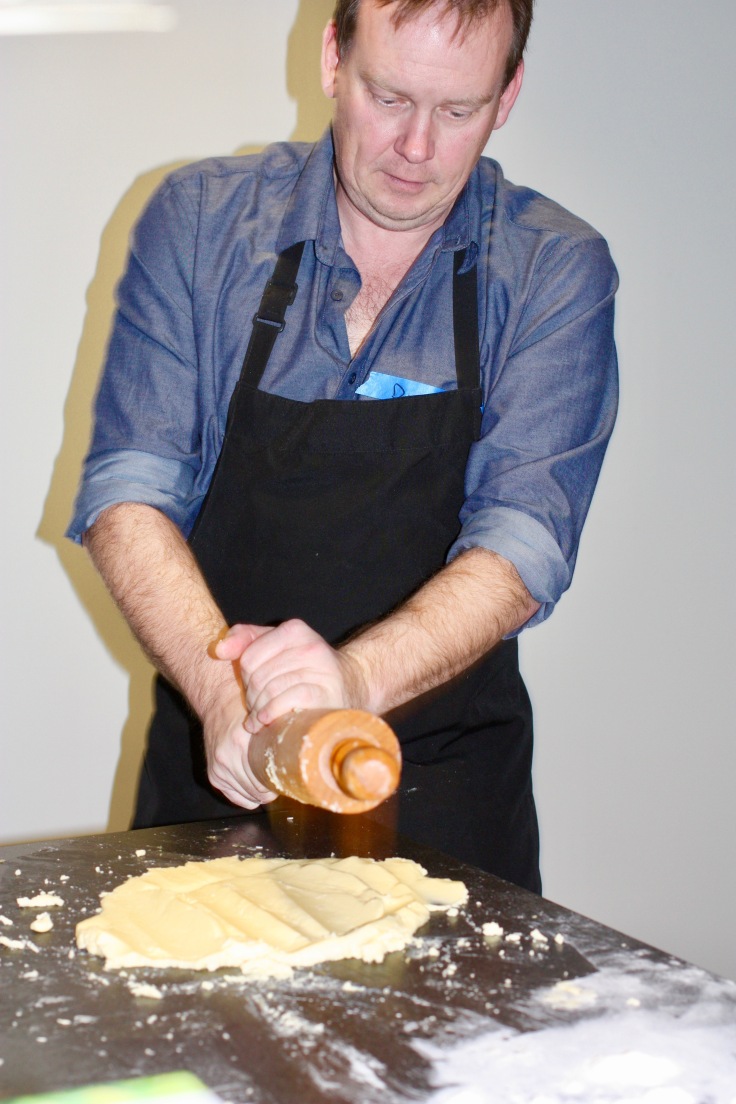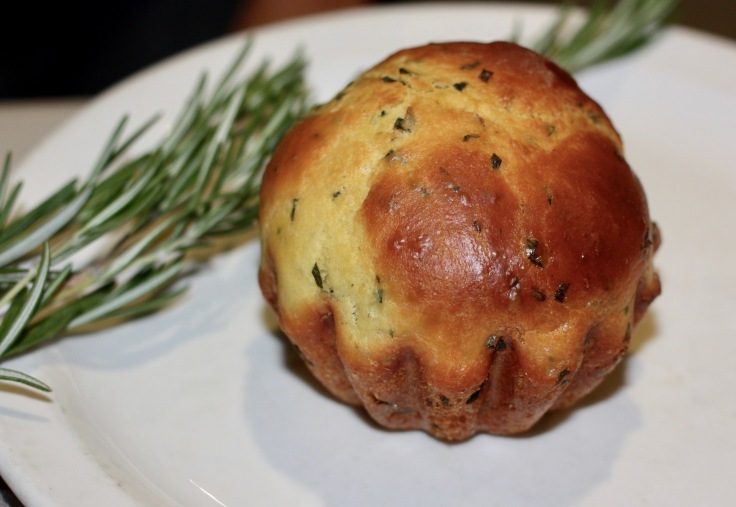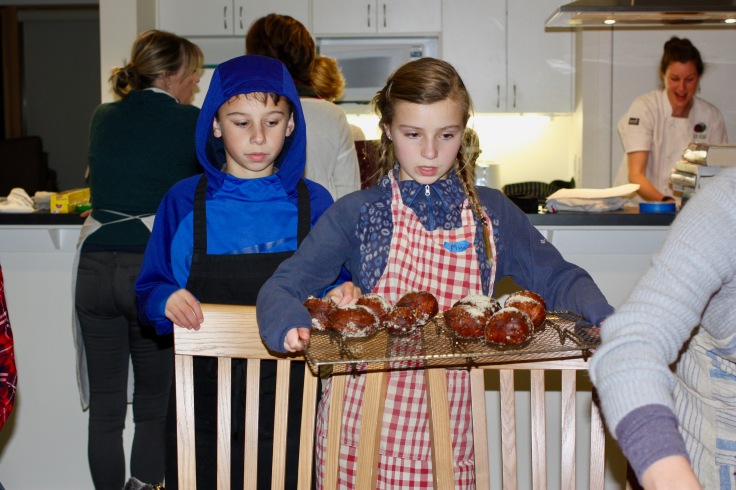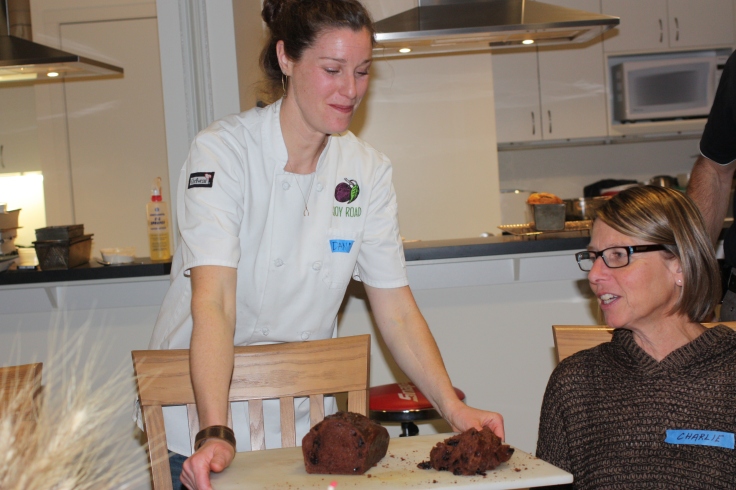
Brioche! How hard can that be?
With ‘go big or go home’ thinking the first Naramata-Blend cooking class tackled the most delicious and some would argue, trickiest to make of the bread family – brioche. This rich, buttery egg French dough is versatile and Dana Ewart, Chef and Proprietor of Joy Road Catering helped our class of 20 make no less than five variations on this buttery theme including: herb with chives and tarragon, cocoa and dried cherry (CC Orchards cherries), plain, jelly donuts and the crowning achievement – Naramata Candied Chestnut and Dried Plum Loaf filled with local fruit and nuts.
Candied chestnuts
You can buy candied chestnuts or marrons glacé but what would be the fun in that? Making your own is easy but takes a few days as you wait for all the sugar to absorb into your lovely locally-sourced chestnuts. Here’s how: (This recipe makes twice as much as you will need for your Naramata Loaf but since it takes so long, you may as well make enough for two batches…)
1. Blanch 500g fresh chestnuts in boiling water for 4 minutes, drain, then peel while still warm.
2. Bring 300g sugar and 300ml water to the boil in a heavy-based pan to make a syrup. Simmer for 10 minutes, then add the chestnuts and simmer for 7-8 minutes.Take off the heat and leave to stand overnight in the syrup.
3. The next day, bring the chestnuts/syrup back to the boil, cook for 1 minute, then remove from the heat and cool. Repeat the boiling and cooling process 2 or 3 times over the next couple of days until all the syrup is absorbed.
4. Preheat the oven to around 150°F, spread the candied chestnuts on a tray covered with baking paper, then pop into the oven. Prop open the door and leave for 2 hours or until firm.
Brioche master recipe
| Ingredient | Amount | Notes |
| PRE-FERMENT | ||
| Flour (white all purpose or bread flour) | 188g | |
| sugar | 7g | |
| Fresh yeast | 30g | |
| milk | 137ml | |
| MAIN DOUGH | ||
| Flour (white all purpose or bread flour) | 563g | Naramata Candied Chestnut and Dried Plum Brioche |
| Eggs | 10 whole | Add 125g chestnuts & 125g prunes |
| sugar | 70g | |
| Fresh yeast | 30g | |
| salt | 18g | |
| Unsalted butter | 454g/1lb | Yield: 3-4 loaves |
This recipe can be halved. Any left-over brioche dough can be frozen. Wrap tightly in plastic as the dough will continue to expand in your freezer. Your baked brioche can also be frozen if for some unknown reason you can’t eat it all in one or two days…
Method:
PRE-FERMENT
In a bowl or Tupperware that will hold about 3 cups, weigh the flour and sugar. Gently warm the milk until it is about body temperature or slightly warm to the touch. Crumble the fresh yeast and pour the warmed milk into the flour mixture. Mix & knead until all of the flour is hydrated and the dough is homogeneous.
Rest the pre-ferment a minimum of 4 hours out of the fridge or overnight in the fridge.
The following day, or 4 hours later- Pull the butter and eggs out of the fridge to temper.
Mix together by hand or in a kitchen aid with a dough hook attachment the flour, sugar, yeast and eggs. Mix until the flour is all hydrated- scraping down the sides of the bowl and underneath the hook occasionally to ensure that there are no lumps of dry flour.
When the dough is homogenous, stop the mixing and allow to rest for 15 minutes (this is called an autolyse).
Add the salt and the pre-ferment on top of the dough, pulled in to fist-sized chunks.
Mix again for a few minutes until the pre-ferment and the salt is mixed in. During this mix, plasticize the butter, by cutting it into pieces & beating it with a rolling pin inside a garbage bag or between layers of parchment paper.
Begin adding 1 tablespoon-sized pieces of the plasticized butter- in increments until all of the butter is incorporated. Now is the time to add the candied chestnuts and dried fruit.
Once the butter is incorporated, mist a tray or bin with neutral oil to put the dough in – cover & rest in the fridge. After 30 mins-1hr, fold the dough or punch it down. Rest for 4 hours- overnight in the fridge.
Punch down the dough, and lightly mist oil- or butter and flour your brioche pans. Weigh the dough into desired portions, shape & place in the molds or pans (making sure the dough fills only 1/3 of the pan) Proof in a warm draft- free area for approximately 40 minutes or until the dough has doubled in bulk. Brush with egg wash, and bake at 400 F for 10 minutes, then 375F for 15-20 minutes or until golden. Remove from the pan & cool on rack.

Dana’s brioche tips and tricks
Equipment
- You can make brioche by hand but it’s super tricky to incorporate all that butter in without warming it too much with your hands. If you want to do serious baking you need to invest in a stand mixer. Christmas gift list item?
- To take your baking to the next level, you will also need a scale. This relatively inexpensive purchase will allow you to be accurate and ensure more consistent results.
- A dough scraper will cost a couple of bucks and is invaluable when you are working with this sticky dough.
Ingredients
- Buy the best local ingredients you can find. The better the ingredients the more flavourful results. Shop your farmer’s markets, seek out local farmers…
- Neutral oils include grapeseed, vegetable and canola oil.
- Fresh yeast trumps dried yeast and it can be purchased at most grocery stores. Ask at the bakery counter. Fresh yeast can be frozen. If you do use dried yeast in the recipe above substitute the 30 grams of fresh for 15 grams of dried.
Brioche
- Make sure you mix the brioche dough for the full 15 to 20 minutes. It needs to feel soft, smooth, warm and have good elasticity.


General
- Don’t be worried about over-working your dough. It’s not a cake batter but a bread dough.
- Don’t skip the egg wash step. It helps keep a crust soft so it can continue to rise and “not be a prisoner in its own crust”. It also makes your brioche shine.








December 12, 2016 at 1:12 am
Looks like you had a wonderful afternoon – I’m certainly in for the next class!! Good on you Elaine! Naramata is certainly wearing well on you. >
LikeLiked by 1 person
December 12, 2016 at 1:20 am
Thanks. Would love it if you come to the February class. We had a blast. It was Dana and the peeps in the class that were up for anything!
LikeLike